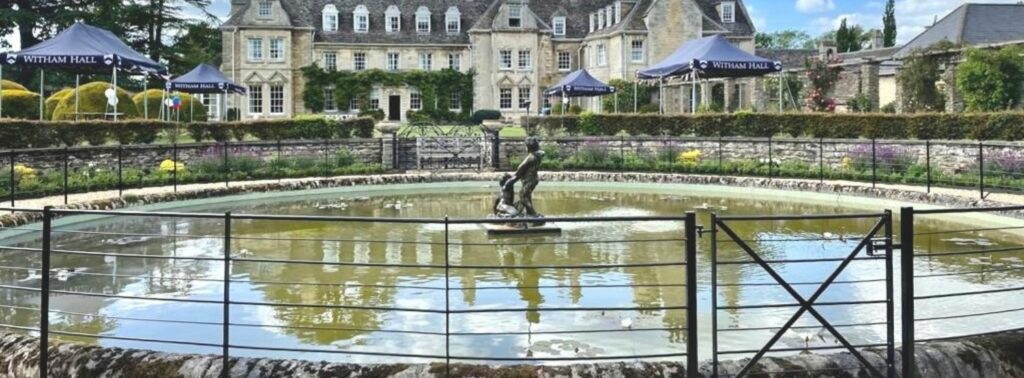The elegance and splendour of stately homes and country estates are the very reasons we love to marvel at the grandeur of these magnificent properties.
However, these estates require a tremendous amount of upkeep and maintenance, and as we’re getting towards Spring, now is the time to consider what changes you’ll be implementing across your estate this year.
In this piece, we’ve put together some of the areas you may wish to consider looking at, what you’ll need and how we can help you.
Fencing
Traditionally fencing styles are frequently seen across estates all over the country, and it’s important to ensure that whatever style you choose for your grounds, you’re doing so with the aesthetic consideration of the property in mind.
Estate fencing has been a popular choice since the Victorian era, and this has as much to do with its aesthetic appeal as it does with the ability to flow with the land and leave views of the landscape unobstructed.
Our estate fencing is created using steel fabricated right here in the UK, and we have a range of standard and bespoke sizes and finishes to choose from.
Vegetable Gardens & Flower Patches
No traditional estate would be complete without wonderful spreads of flower patches and vegetable gardens.
That said, there are a range of animals and birds that are particularly partial to certain plants and vegetables. While it’s ideal to try to do as much as you can to give back to the natural world, there is one mammal roaming your estate that will gobble up absolutely everything in sight given the chance.
Depending on where you are in the country, you’re likely to be playing host to at least two or three of the UK’s six deer species. However, while they are wonderful creatures, they are all voracious and largely unfussy feeders and will decimate flower, herb and vegetable gardens in short order.
In order to protect your fledging gardens from the impact of deer on your estate, it’s a good idea to consider our steel deer fencing.
Deer are surprisingly agile creatures and are often capable of jumping over fencing that is too short or even squeezing underneath. Our deer fencing options provide a secure, robust and unobtrusive means to prevent deer from entering certain areas of your property.
Tree Protection
We all know how important trees are, not only to the natural world but also to our own health as a species too.
If you’re planting new trees, or even protecting veteran trees on your estate, it’s essential to protect them from the damage caused by deer and livestock.
Young stags are often responsible for damaging developing trees during fraying when the males are trying to remove the velvet from their new antlers in the summer.
Wild animals are not the only culprit for damaging trees; your own animals such as cows and even horses can do serious damage by chewing off the bark, eating developing shoots and unsettling the roots by using them as scratching posts.
Not only are tree guards ideal for protecting both small and established trees from livestock and deer, but they also create a wonderful focal point around your grounds too.
We are a trusted supplier of tree guards to the National Trust, so our pedigree and experience in this area is considerable.
Borders
Borders are traditional features around estates and stately homes as they are capable of sectioning off the property into different zones.
Box hedging and topiaries are one means of doing this, however, they are prone to damage from animals, such as deer, and seasonal weather conditions, so it’s best not to rely on these too much across the estate.
Your options for landscaping boundaries are numerous, and what you ultimately opt for will largely depend on what you’re looking to achieve.
For example, if you’re looking for edges around pathways, driveways, flowerbeds and lawns, then our steel edging is absolutely perfect for creating clean, neat boundaries. We supply our steel edging as a simple self-installation option too.
Pathways
Every country estate garden landscape requires well-maintained pathways which flow and create links between gardens and other areas of the estate, too.
Walkways with herbaceous perennials are ideal for creating pops of colour and softening borders, which can be connected seamlessly with the wider landscape.
Steel arches and pergolas are ideal for walkways which lead to gardens and other ornamental features since they are capable of creating an organic feel (particularly when paired with colourful climbers) and a sense of anticipation and atmosphere.
Altering the Outdoor Space on Your Grounds

Before you consider making any alterations to the exterior grounds of your property that we’ve mentioned above, it’s worth considering what restrictions may be in place – particularly if your property is a Grade II Listed Building or is an area of conservation interest.
Protecting Your Property’s Legacy
If all, or even parts of your estate, are Listed, then this will include the spaces directly around it too. These can often include fences, gates, railings, paths, trees and walls that may also be a part of the property’s heritage, so even if you are able to make changes, then it’s important these closely align with what would previously have been there.
Your grounds are just as important as the features within the home since they will help to reinforce the period features and tie the current property with the aesthetic of the past. If you’re looking to reinstate or replace some outdoor features on your land, then Your Home’s History is the ideal place to start.
Do I Need Permission to Make Changes?
You may require permission to make changes to the grounds around your estate. If your property is listed, outdoor structures such as walls and outbuildings will often also come under protected status.
This means it’s likely you’ll need to obtain consent before removing or altering them.
Any other major landscaping projects will require planning permission, and your local authority will need to consider how any changes may impact the historical authenticity of the property in conjunction with the changes you’d like to make.
It’s important to bear this in mind before undertaking any significant landscaping work, especially if your property is listed.
Changing or Removing Existing Walls

If your home is listed, or your estate is part of a conservation effort, you’re likely to need consent to remove any part of your walls. Property boundaries are often as old as the property itself, and many walls, fences and railings have a historical or architectural value of their own.
In some cases, if you intend to build a new wall or fence, you’ll require planning permission. If the home itself is listed, then you may find that gates, fences or walls or protected under their own right.
For all other scenarios, you’ll only need permission from your local authority to build fences, or walls if they’re next to a public highway or stand over two metres high.
If you have any questions about any of our products, or you’d like more information about our other products or our installation services, please don’t hesitate to get in touch with us today and we’ll be happy to help.

